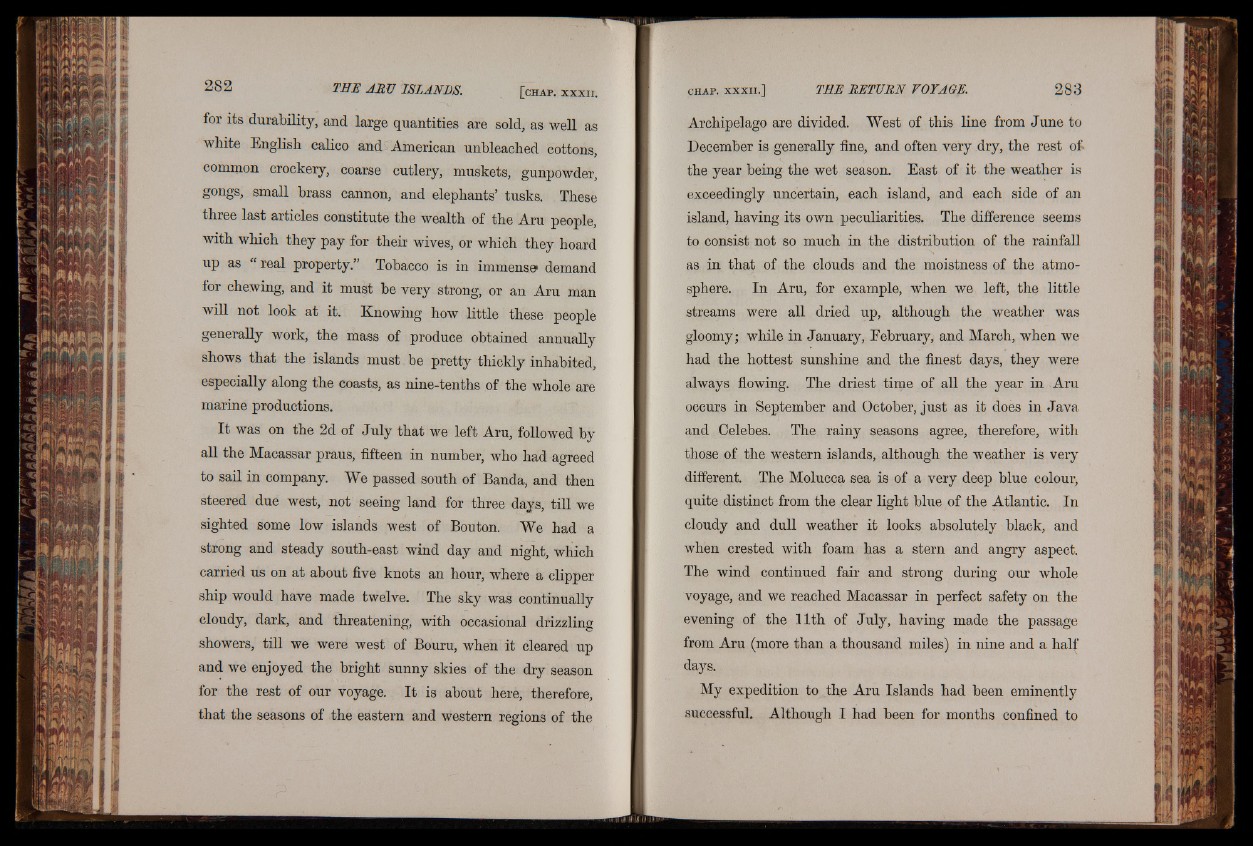
for its durability, and large quantities are sold, as well as
white English calico and American unbleached cottons,
common crockery, coarse cutlery, muskets, gunpowder,
gongs, small brass cannon, and elephants’ tusks. These
three last articles constitute the wealth of the Aru people,
with which they pay for their wives, or which they hoard
up as “ real property.” Tobacco is in immense» demand
for chewing, and it must be very strong, or an Aru man
will not look at it. Knowing how little these people
generally work, the mass of produce obtained annually
shows that the islands must be pretty thickly inhabited,
especially along the coasts, as nine-tenths of the whole are
marine productions.
I t was on the 2d of July that we left Aru, followed by
all the Macassar praus, fifteen in number, who had agreed
to sail in company. We passed south of Banda, and then
steered due west, not seeing land for three days, till we
sighted some low islands west of Bouton. We had a
strong and steady south-east wind day and night, which
carried us on at about five knots an hour, where a clipper
ship would have made twelve. The sky was continually
cloudy, dark, and threatening, with occasional drizzling
showers, till we were west of Bouru, when it cleared up
and we enjoyed the bright sunny skies of the dry season
for the rest of our voyage. It is about here, therefore,
that the seasons of the eastern and western regions of the
Archipelago are divided. West of this line from June to
December is generally fine, and often very dry, the rest of
the year being the wet season. East of it the weather is
exceedingly uncertain, each island, and each side of an
island, having its own peculiarities. The difference seems
to consist not so much in the distribution of the rainfall
as in that of the clouds and the moistness of the atmosphere.
In Aru, for example, when we left, the little
streams were all dried up, although the weather was
gloomy; while in January, February, and March, when we
had the hottest sunshine and the finest days, they were
always flowing. The driest time of all the year in Aru
occurs in September and October, just as it does in Java
and Celebes. The rainy seasons agree, therefore, with
those of the western islands, although the weather is very
different. The Molucca sea is of a very deep blue colour,
quite distinct from the clear light blue of the Atlantic. In
cloudy and dull weather it looks absolutely black, and
when crested with foam has a stern and angry aspect.
The wind continued fair and strong during our whole
voyage, and we reached Macassar in perfect safety on the
evening of the 11th of July, having made the passage
from Aru (more than a thousand miles) in nine and a half
days.
My expedition to the Aru Islands had been eminently
successful. Although I had been for months confined to